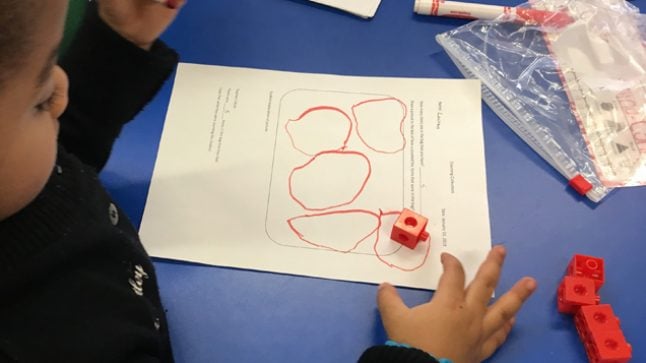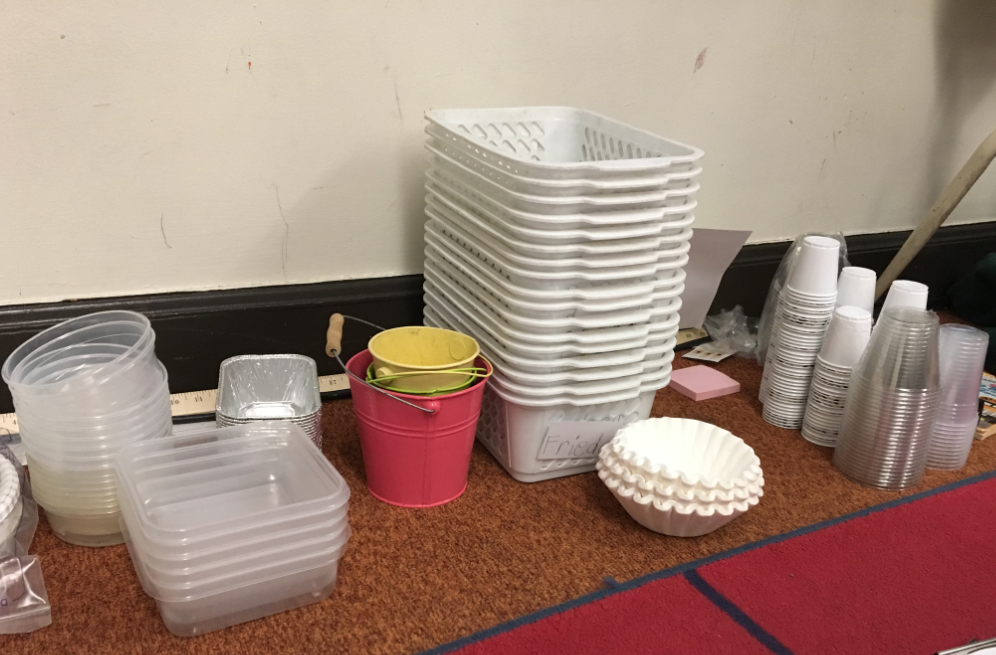Series: Ideas at Work
Counting Collections Builds Strong Counting Knowledge

There are all kinds of things to count in pre-k to second grade classrooms, including at several Chicago Archdiocese schools where we work regularly with teachers. Students have many opportunities to count collections of real objects—stickers, bottle caps, glue sticks, glass beads, acorns, LEGOs… you name it. After students determine how many in the collection, they work to record their counts with pictures and symbols.
Counting Collections develops the Big Ideas of number sense and counting, such as cardinality, one-to-one correspondence, and unitizing. This routine activity is based on research from UCLA and the resulting book by Megan Franke, Elham Kazemi, and Angela Chan Turrou, Choral Counting and Counting Collections: Transforming the PreK-5 Math Classroom. These teachers endeavor in this work through our partnership with Big Shoulders Fund, which supports many Chicago-area Catholic schools through professional development.
Counting Collections has an easy to follow yet effective structure which includes the following four components: prepare, launch, work, and wrap up.
Prepare
In preparing the collections, teachers gather sets of objects in quantities that reflect students’ number sense and counting knowledge. This will vary by grade level and student experience. Keeping collections organized is important. Collections should be bagged and labeled, and teachers keep a log of each bag and its contents. This log helps teachers stay organized and is a handy reference to confirm students’ findings once they count the collections. It may look like this.

| Bag | Item | Amount |
|---|---|---|
| A | cubes | 40 |
| B | crayons | 12 |
| C | pom poms | 22 |
Launch
To launch, use interactive modeling to prepare students to work with their own collections. This means teachers and students model the steps involved in counting collections, while other students notice and describe those steps. Over time teachers highlight different aspects of the procedure, always making the math goal or social goal explicit so that students are ready to go to work on their own.
Work
During work time, students might work in pairs or individually depending on the teacher’s goals for that day, which might be assessment or it might be for students to support each other in developing more sophisticated counting strategies. Students choose tools to help them keep track as they count, such as cups and bowls or number paths and ten-frames. As students work, the teacher checks in with students by commenting or asking questions. Students record the total of their collection and represent how they came to their total by drawing and/or writing.

Wrap up
To wrap up, teachers bring students together to discuss some of the work they did. Possible closure topics may focus on new strategies for counting or effective recording representations.
Pre-k to 2nd grade classroom teachers are excited to see their students deepening and strengthening their number sense and counting understandings through this work. And, students are so excited to count that they bring their own collections from home to school.
Additional Resources:
https://tedd.org/counting-collections
https://www.responsiveclassroom.org